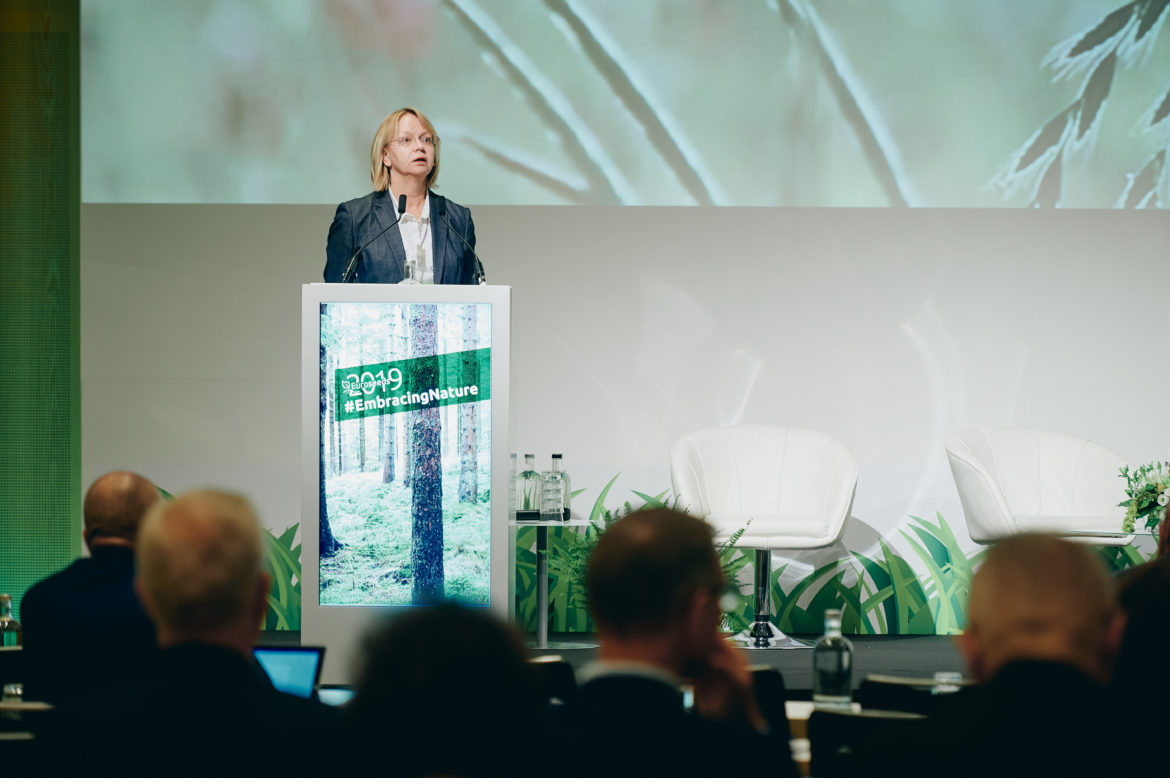Retiring EU official on seed laws, international cooperation, and Europe’s plant breeding future.
WHY IT MATTERS
For more than 20 years, Päivi Mannerkorpi has helped shape the European Union’s seed legislation and plant variety rights system — work that underpins the quality, innovation, and competitiveness of the EU’s agricultural sector. As the world grapples with climate change, food security, and biodiversity loss, strong and forward-looking seed laws are more important than ever. With Mannerkorpi now stepping into retirement, her reflections offer a rare window into the past, present, and future of plant reproductive material policy — and the global impact of Europe’s regulatory leadership.
Seed World Europe (SWE): What initially drew you to the world of seeds, and how did you end up working in seed legislation at the EU Commission?
Päivi Mannerkorpi (PM): Before joining the European Commission, I was in charge of a Unit on Plant Production and Animal Nutrition at the Ministry of Agriculture in Finland and the EU legislation, including seeds, was our daily work. At the Commission, after some years working on novel food legislation, I had a chance to return to agriculture when I was offered a position to lead the plant reproductive material sector.
SWE: Over your long career, what do you consider the most significant achievement(s) in EU seed legislation or in the Community Plant Variety Rights system?
PM: The most important aim of the seed legislation is to ensure the quality of seeds to farmers. The plant variety rights legislation aims to incentivise and protect innovation in plant breeding. The EU seed sector is leading in the world, and I believe that the legislative framework and systems in place have contributed to this. I also believe that the EU legislation and the systems in place have set standards that influence seed laws and plant variety rights systems globally. Moreover, the openings made to some smaller scale activities (e.g. conservation varieties, preservation mixtures) have had a positive impact on agrobiodiversity over the years and supported the conservation of genetic resources and their sustainable use.
SWE: What were the biggest challenges you faced in shaping EU seed legislation, and how did you navigate these challenges?
PM: Clearly the developments in 2014 in relation to the proposal on plant reproductive material were challenging. This resulted in a withdrawal of the proposal despite the good discussions among the Member States and the various requests to submit an amended/new proposal. There were many reasons for the negative opinion of the European Parliament. We have all understood that it is not only about technical quality matters on seeds but also about private gardens, seed collections, food on your plate (public perception) and what kind of agriculture one prefers. It is of outmost importance that diverse stakeholder interests, including those of breeders, farmers and NGOs need to be reconciled in the legislative process aimed at building consensus, making the legislation more robust and widely accepted. The Parliament (Committee of Agriculture) is well informed. So, it was at the time a lost opportunity, but we are now back 10 years later and better equipped, in particular by carefully addressing the issues under discussion at the time.
SWE: Looking ahead, what do you see as the most pressing issues or unresolved challenges in seed legislation and plant variety rights in the EU?
PM: The most important issue is to modernise the legislative framework on seeds, integrate new technologies and production methods, making all tools available, harmonise among the Member States and ensure its relevance for the decades to come. We are facing great challenges around us on climate change, loss of agribiodiversity, environmental degradation as well as geopolitical aggressions. I believe that plant breeding has a key role to play and hopefully it can deliver. The new Commission’s policies concentrate on EU’s competitiveness and sustainability. Specifically on plant variety rights, the legislation and Community Plant Variety Office (CPVO) will be first evaluated. Most likely there is a need to focus on needs around improving provisional protection, enforcement on farm saved seed as well as administrative changes.
SWE: You’ve been involved with the CPVO have also attended many UPOV meetings. How has such international collaboration influenced EU policies in this field and vice versa?
PM: Firstly, the seed/PVR sector is from the outset very international, and the EU is active in shaping the UPOV policies and decision making. The EU’s CPVO has shared its expertise and UPOV has taken up the advances of the CPVO to help the development of worldwide system. Secondly, the general principle across the EU legal frameworks is to keep EU legislation aligned with international standards, also ensuring that EU plant breeders can protect their varieties internationally under a recognised framework that facilitates global trade. I would say that the 20 years of cooperation with UPOV has benefited both sides. We have also been sharing general EU policies on sustainability and climate change to guide international discussions in directions that support these objectives. Seminars on request of the EU were organised.
SWE: As you prepare to retire, what’s next for you? Do you plan to stay connected to the world of seeds in any way, or are you looking forward to something completely different?
PM: The very first thing is to move back home to Finland. I am not planning to be professionally active but will follow general developments in agriculture. Some of my relatives are still active in agriculture and I hope they will continue to do so. The plan is to finally do things I never had time for including voluntary work. We will be living both in Finland and Belgium and spend time in South-Europe.
